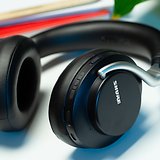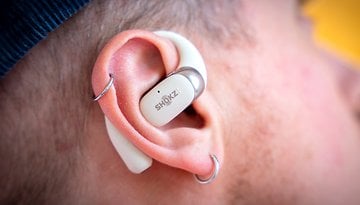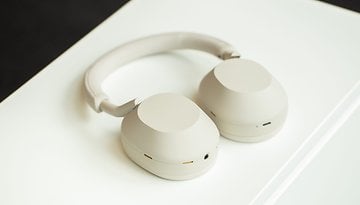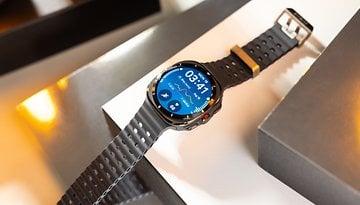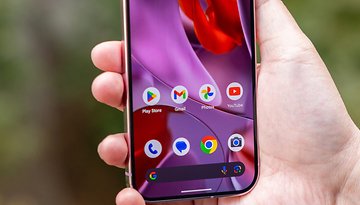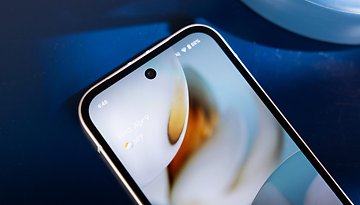Shure Aonic 50 review: Hi-Fi Bluetooth headphones with ANC
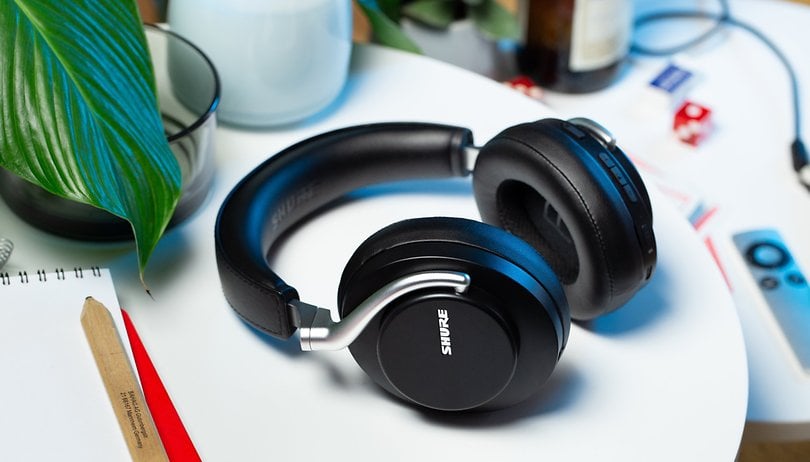

The Shure Aonic 50 are the first wireless headphones from this historic audio manufacturer to embrace consumer-level active noise reduction. The Shure Aonic 50 are a direct competitor to the Bose NCH 700 and Sony WH-1000XM3 and rely on their Hi-Fi performance to make a difference. Is this a winning bet? Stay tuned to find out!
Good
- True wireless Hi-Fi headphones
- Exceptional sound
- Clean yet business-like design
- HD codec support
- Bluetooth multipoint
Bad
- Limited battery life
- Bulky storage case
- Average ANC performance
- Limited app
- Expensive
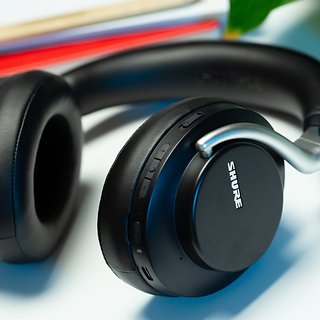
Shure Aonic 50 release date and price
The Shure Aonic 50 have been available since April 2020 at a price of $400. They go for around £359.00 in the UK. This places them right at the top of the true wireless over-ear headphones market alongside the Bose Noise Canceling Headphones 700 and the Sony WH-1000XM3.
Shure Aonic 50: who is this product for?
Shure is an American brand, having started in Chicago in the 1920s, and since then has become a historic player in the professional audio market. Disclaimer: I am not an audiophile, so I do not have that many ideas about the professional market and all of its nuances, players, and products. Hence, I will spare you a history lesson that I have no legitimacy to give.
But just so you know, Shure microphones, which are primarily geared toward the professional and music/entertainment industries, have been used by Elvis or John F. Kennedy, for example, and the design of the Unidyne microphone is still pretty much a part of the collective imagination today. In addition, its audiophile headphones are very well known in the mixing and mastering world.
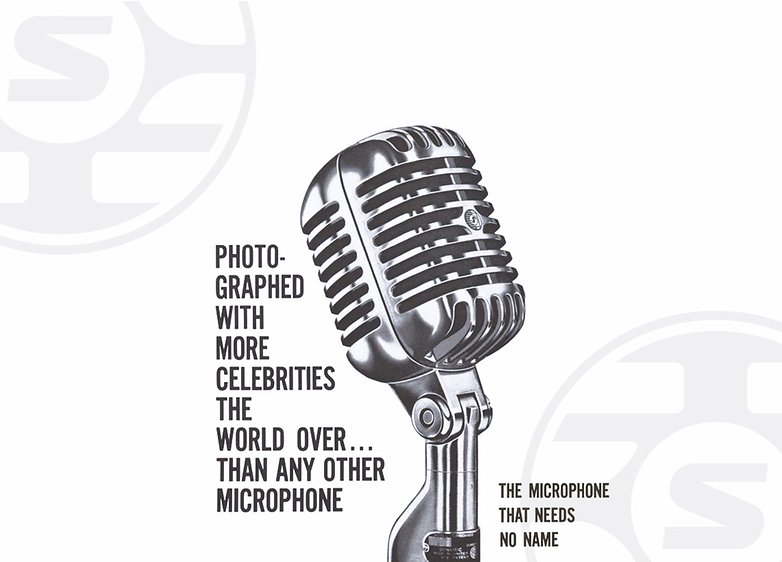
In short, those who use Shure products are not beginners or newbies to the music industry. And the products that roll off their production line do not end up as a laughing stock in the consumer audio market. The Shure Aonic 50 supports AAC, aptX, aptX Low Latency, aptX HD, and LDAC codecs, offers 20 hours of battery life, Bluetooth 5 multipoint connectivity, active noise reduction, and a transparency mode: now how about that for performance?
At around $400, the Shure Aonic 50 is a direct competitor to the Bose NCH 700 and Sony WH-1000XM3, which were sold at the same price point at the time of their respective release dates. It is therefore considered as a premium, flagship headset.
Except that these two market leaders have since dropped their prices quite a bit. The Shure Aonic 50 stand out as the first headset to introduce active noise reduction. Shure looks as though they are building on their heritage and expertise in Hi-Fi sound in order to set itself apart from the competition.
But, like Bose, the Shure Aonic 50 is an American-styled headset. A headset that gives you a vision - its vision-of what good sound is. The user experience is therefore much less versatile and customizable than on a Japanese product, which is infinitely configurable.
I liked the Shure Aonic 50 for...
... a clean and business-like design
The Shure Aonic 50 features the award-winning combo of high-end design with memory foam leather pads, a leather hoop, and brushed aluminum pins. This pair of cans is quite massive at 334 grams, but that weight is quickly forgotten once it's wedged onto your head.
It's one of the most comfortable headphones that I've ever reviewed. The earpads are soft and the headband is soft enough not to put too much pressure on your ears, while providing excellent passive noise isolation.

The Shure Aonic 50's design is a great way to get back to the basics. No more hipster touch surfaces, we're back to the basics with physical buttons. Real ones, mind you, that are used to control volume, power, and juggle between ANC and transparency (amplification of ambient noise) modes. The only flaw I noticed is the rigidity of the hinges when it comes to rotating the earcups.
The Shure Aonic 50 has made stiffness as one of its signatures. You can't fold the helmet up. You have to lay it flat in the accompanying gigantic, circular storage case, which I think is large enough to be used as a spare wheel on a child's bike. Otherwise, the matte black finish gives the Shure Aonic 50 a serious look. We're not here to joke around, I told you.
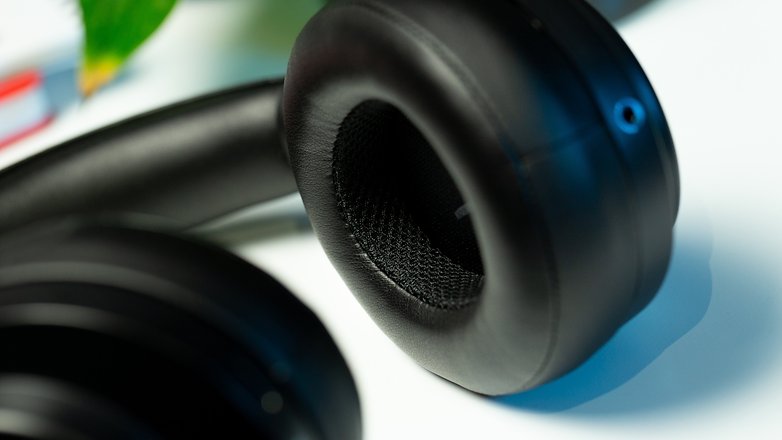
You can find all the photos of the Shure Aonic 50 design made by AndroidPIT in this Google Photos album.
... excellent Hi-Fi sound that bucks the trend
The Shure Aonic 50 is meant to be a Hi-Fi headset and therefore supports AAC, aptX, aptX Low Latency, aptX HD, and LDAC codecs. I tested it in Bluetooth and wired modes for almost two weeks with the Sony Xperia 10 II. I listened to FLAC files but also in AAC and others as well as streaming via Deezer Hi-Fi (which offers "lossless" or CD quality).
This brings us to Shure's "American" side. Across the Atlantic, we don't like to do what everybody else does. While almost the entire known world uses the metric system, the United States insists on retaining the imperial system. And while the vast majority of Bluetooth headsets adopt a low profile, Shure prefers fidelity of sound.
When I say bass-driven, I'm referring both to a headset's ability to sink into the low frequencies (below 20 Hz) as well as their tendency to increase those frequencies in their bandwidth or "audio signature". Shure takes the counterpart of Sony and Bose, leaving the bass aside to focus on the essentials with a frequency range of 20 to 22,000 Hz.
We thus find ourselves with very precise delivery, but above all clear and defined in the mediums (voices) and highs. In the audiophile jargon (that I looked up), we are talking about having a warm signature (found in medium and high frequency ranges).
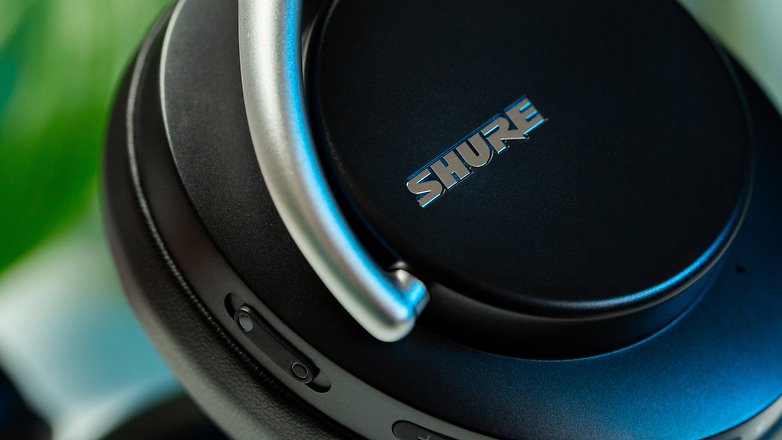
We also have a very wide stereo stage, but where the bass doesn't pump out, it's more subdued. It's really not the kind of audio signature I like, but I can tell that the delivery is extremely clean.
Basically, everything is identifiable: every instrument, every subtlety of sound, and its different variations are perceptible if the mix has been thought of as such. The whole rhythm with bass remain present but without drowning out the musical message in a "boom-boom" festival (as many, including me, appreciate it).
The Shure Aonic 50 is one of the more amazing Hi-Fi active noise-canceling Bluetooth headsets on the market right now. It's a true success story. And it's all the more impressive because Shure didn't try to brush us off by opting for the W-shaped audio signature offered by almost all of its rivals.
If you want to hear sound as it was imagined when you mixed/mastered it, in short, if you want the most faithful audio reproduction possible on a consumer Bluetooth solution, the Shure Aonic 50 is the best choice.
I didn't like the Shure Aonic 50 so much because...
... noise reduction is not impressive
The Shure Aonic 50 features dual active noise reduction. An outward-pointing microphone first analyses and filters out most of the ambient noise. Another dedicated microphone, one that points towards your ear this time around, analyses and "removes" the residual noise that would have passed between the meshes of the first phonic net.
A promise that looks as good on paper as the one made by Apple's Airpods Pro, which relies on a fairly similar system. But in reality, the Shure Aonic 50 (ANC)'s active noise reduction is pretty average. And at this price, that's still disappointing.
However, all is not lost. As usual, constant solid-state noises (that result from contact with a surface) such as the hum of a car engine, the vibration of a subway train, or the frantic tapping of your desktop neighbor on his computer keyboard, are properly attenuated.
But as soon as you get a more airy or complex sound, like a voice, then the algorithms get to work. The Bose NCH 700 remains the market champion when it comes to this very point. But this weakness in active reduction can also be explained by a concern for consistency with the audio offering on the Shure Aonic 50.
This is because active noise reduction greatly affects the bandwidth of a headset, and the way it reproduces sound. It is understandable that Shure, in wanting to offer high-fidelity Hi-Fi headphones, has been working to limit the adverse effects of ANC on the audio performance of its Aonic 50 headphones.
But it's probably in bad faith for me to say that. Or perhaps it is the fact that I use the ANC very little because it always spoils the audio signature of the headphones somewhat. In any case, this is clearly not the strong point of the Shure Aonic 50 and it certainly can't be turned into a serious selling point.
... ShurePlus Play is almost useless despite excellent equalizer
I'm a very big skeptic when it comes to accompanying apps for headphones or headsets. Often superfluous, if they don't offer a complete range of parameters and equalisation, I would prefer to do without them and consider them as a defect.
Unfortunately, the ShurePlus Play application falls into this category. First of all, I'll admit that the included equaliser is very accurate and allows you to create presets to the nearest decibel, which is really a big plus, especially if the sound signature of the Shure Aonic 50 isn't low enough for your taste, for example.
But for most of the other situations, it is more or less having zero customization levels. Why offer 10 levels for the transparency mode, and only two for the ANC (normal and max)? Apart from this nonsense, I find the application much less customizable than Sony's Headphones Connect.
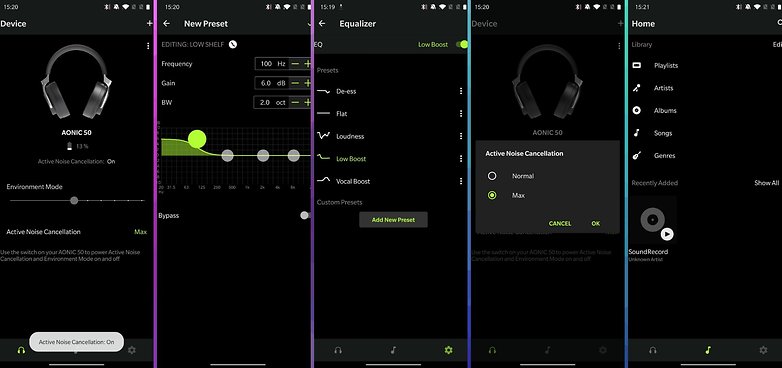
... limited battery life
The manufacturer announces up to 20 hours of battery life on a single charge. But Shure doesn't say whether those 20 hours can be achieved with or without the ANC turned on, or how long it takes to fully charge the headset, let alone whether you can enjoy a few hours of listening with only 10 or 15 minutes of charging, as some competitors do.
Overall, with almost constant use on my office hours (9am-6pm minimum) and 2 hours at home in the evening, all with the ANC activated, the headset lasted me for about a day and a half each time before I had to plug in the headset to get its juices up again.
Be careful, however, because the headset does not come with a built-in sensor that is able to detect whether you have taken it off and goes into sleep mode. This means you will need to have a keen presence of mind to know whether it is turned on or otherwise. The Aonic 50 will rely on USB-C charging which unfortunately, is not the fastest in the world, but with a 30W Warp Charge 30T, I was able to fully charge it in about 2 hours.
Even Jabra and its Elite 85h, which is very good and often wrongly panned by reviewers, lasts for almost 36 hours.
So the battery life of the Shure Aonic 50 is not a real defect, as it still lasts as printed on the specifications sheet, but the battery life is not good enough to be considered an asset on a pair of headphones that carries a price tag which crosses the $400 mark.
Conclusion: are the Shure Aonic 50 a good choice?
Now then, is the Shure Aonic 50 worth splurging $400 on? When you know that the Sony WH-1000XM3, the current reference device in the market, which is still praised by critics and users almost unanimously, sells for around $300 as new, then it's hard to recommend anything else.
But there's no denying that Shure is making a great first step in the consumer wireless headset market. The Shure Aonic 50 has an identity, a character that it expresses through its sound signature that goes against the grain.
It's a nice thumbs-up to the competition that Shure has jumped into the fray, by relying on its know-how rather than trying to emulate its rivals. This makes the Shure Aonic 50 the ultimate Hi-Fi Bluetooth headset with ANC.
Noise reduction is poorer than on a Bose NCH 700 and the experience is less customizable than on a Sony WH-1000XM3. However, if you're just talking about sound with a capital "S", then the Shure Aonic 50 is a great choice, better than Bose, and at least as good as Sony (if you're not too fond of overdriven bass).
And if they were to drop in price, I would recommend them without any hesitation.
